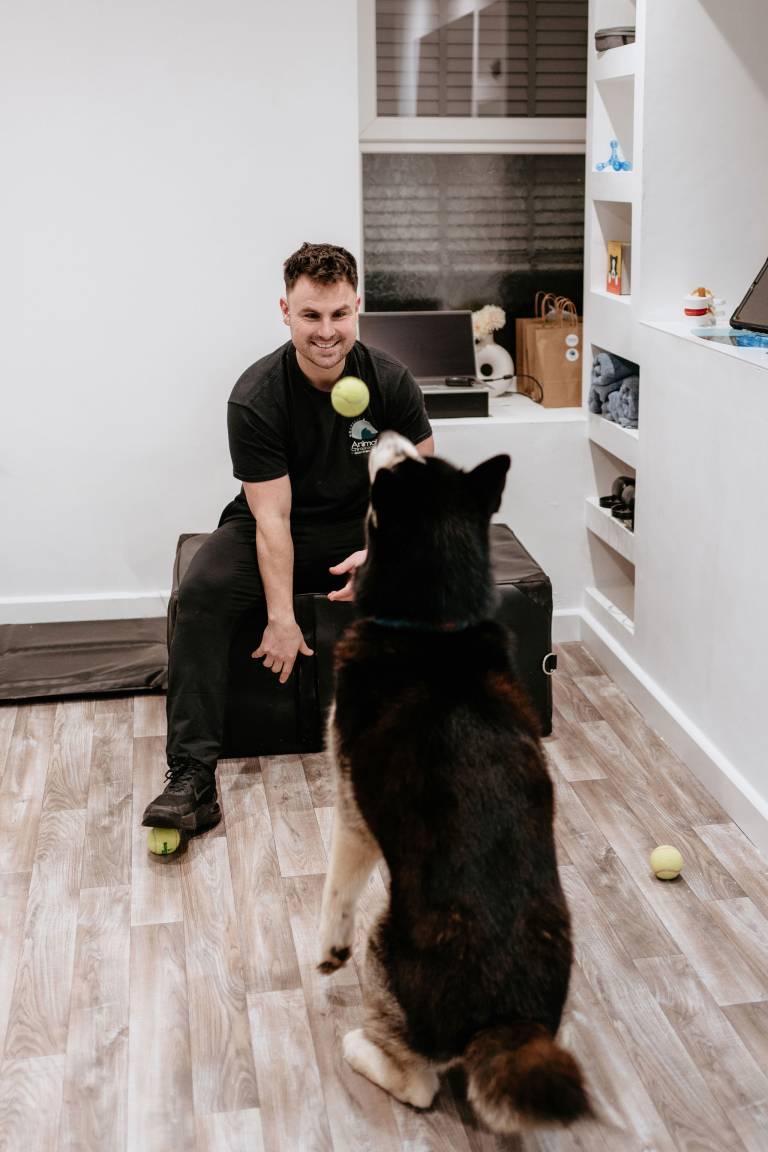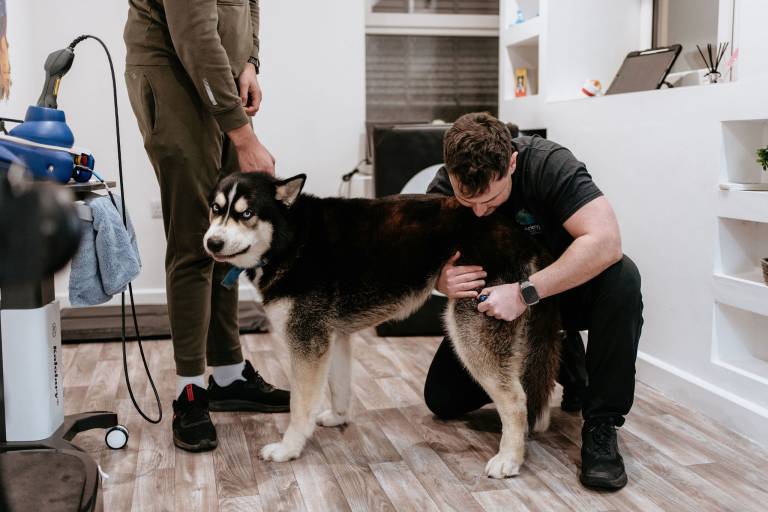Prehabilitation

Prehabilitation, often referred to as "prehab," is a proactive approach to enhancing a dog's physical condition before undergoing surgery or engaging in strenuous activities or simply to prepare a dog for its daily demands. We include this a lot in our treatment plans here at Animal Chiro South Wales HQ to try and safeguard against potential demands and to maximise a dogs physicality and resilience whether that may be gentle walks in the park or competitive agility. Just as prehabilitation is beneficial for humans, it also plays a significant role in improving the health and performance of dogs. Prehabilitation focuses on strengthening muscles, improving flexibility, and optimizing joint function to reduce the risk of injury, promote faster recovery, and ensure better long-term health.
1. Prevention of Injury
One of the main benefits of prehabilitation for dogs is the prevention of injuries. Just like humans, dogs face a higher risk of injury when they are physically unprepared for demanding activities or surgery. Whether a dog is preparing for orthopedic surgery or intensive exercise, prehabilitation helps strengthen the muscles, ligaments, and tendons that support the joints. This improves the dog’s stability and overall resilience, reducing the likelihood of strains, sprains, or tears. For example, strengthening the muscles around the hips, knees, and shoulders can help prevent common injuries such as cruciate ligament tears or hip dysplasia.
In agility dogs, working on prehabilitation can also address weaknesses that might lead to overuse injuries, which are common due to the high intensity of training and competition. Strengthening the core and limbs prepares the dog’s body to handle the stresses of agility courses, reducing the chances of injury during quick movements or jumps.

2. Improved Joint Health
Dogs that undergo prehabilitation often have better joint health. Prehabilitation exercises focus on improving joint mobility, increasing range of motion, and promoting the flexibility of muscles and tendons. This is particularly important for dogs with early signs of arthritis or other joint-related conditions. By strengthening the muscles that support the joints, prehabilitation can help reduce the pressure placed on the joints themselves, which in turn can slow down the progression of arthritis or degenerative joint diseases.
For older dogs or those predisposed to hip dysplasia, elbow dysplasia, or other joint issues, prehabilitation provides an opportunity to maintain joint function and prevent further degeneration. Early intervention through exercises that target specific muscles can help improve a dog’s movement patterns and alleviate stress on the joints, contributing to better long-term mobility.
3. Faster Recovery After Surgery
Prehabilitation can significantly accelerate a dog’s recovery after surgery. Dogs that undergo prehab before surgery tend to recover more quickly and effectively, as their bodies are better prepared to heal. Prehabilitation helps improve muscle strength and joint mobility, so after surgery, the dog’s body can more easily return to normal function. The muscles are already h3er and more flexible, making rehabilitation after surgery less difficult.
Additionally, the increased strength and flexibility provided by prehabilitation can lead to a reduction in post-surgical complications. For example, dogs that are well-conditioned before surgery are less likely to suffer from muscle atrophy, which can occur when a dog is forced to rest for extended periods post-surgery. Prehabilitation sets the foundation for a more seamless transition into post-surgical rehabilitation, shortening the overall recovery timeline.
4. Enhanced Performance in Athletic Dogs
For active or working dogs—such as those involved in agility, hunting, or herding—prehabilitation can enhance performance by optimizing the dog’s physical abilities. Prehab exercises focus on core strength, balance, coordination, and flexibility, all of which are crucial for high-performance dogs. Strengthening the core muscles helps improve stability, while targeted exercises for the limbs ensure that the dog’s muscles are capable of handling the rapid movements required in competitive environments.
Prehabilitation also prepares dogs for the physical demands of their work or sport, allowing them to perform at their best. By focusing on conditioning exercises that improve endurance, balance, and strength, prehabilitation ensures that a dog’s body is ready for the physical demands placed on it, reducing fatigue and the risk of overuse injuries.
5. Mental Well-being and Confidence
Physical readiness also contributes to a dog’s mental well-being. When dogs are prepared for physical tasks, they are less likely to experience stress or anxiety associated with pain or discomfort. Dogs that are h3er and more mobile are more confident in their abilities, whether it’s during physical therapy, training, or competitive events. A physically prepared dog is more likely to engage in activities without hesitation, and the improved confidence can have a positive impact on behavior as well.
In some cases, prehabilitation can help alleviate behavioral issues caused by pain or discomfort, such as fear or reluctance to move. By reducing the risk of pain or injury through conditioning, prehabilitation promotes a more positive experience for the dog during physical activities.
 6. Long-term Health Benefits
6. Long-term Health Benefits
The benefits of prehabilitation extend beyond just surgery or competition preparation. Dogs that undergo regular prehabilitation exercises often experience better long-term health. The exercises not only help maintain muscle tone and joint health but also promote overall fitness, including cardiovascular health. By keeping a dog physically active and conditioned throughout its life, prehabilitation can help maintain optimal weight, improve stamina, and increase life expectancy.
For senior dogs, prehabilitation can be particularly beneficial in maintaining mobility and reducing the impact of age-related conditions. It helps them retain strength, balance, and flexibility, which can mitigate the effects of arthritis, hip dysplasia, and other age-related musculoskeletal issues. Regular prehabilitation can significantly enhance a senior dog’s quality of life, allowing them to remain active and comfortable into their later years.
Prehabilitation offers numerous benefits for dogs, from preventing injuries and improving joint health to speeding up recovery after surgery and enhancing athletic performance. Whether preparing for surgery, competition, or simply maintaining overall health, prehabilitation is a valuable tool for improving a dog’s physical condition and well-being. By proactively addressing weaknesses, promoting muscle strength and flexibility, and preparing the body for the demands placed on it, prehabilitation helps ensure that dogs enjoy a healthier, more active life.



